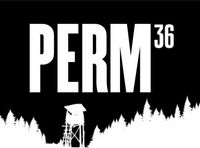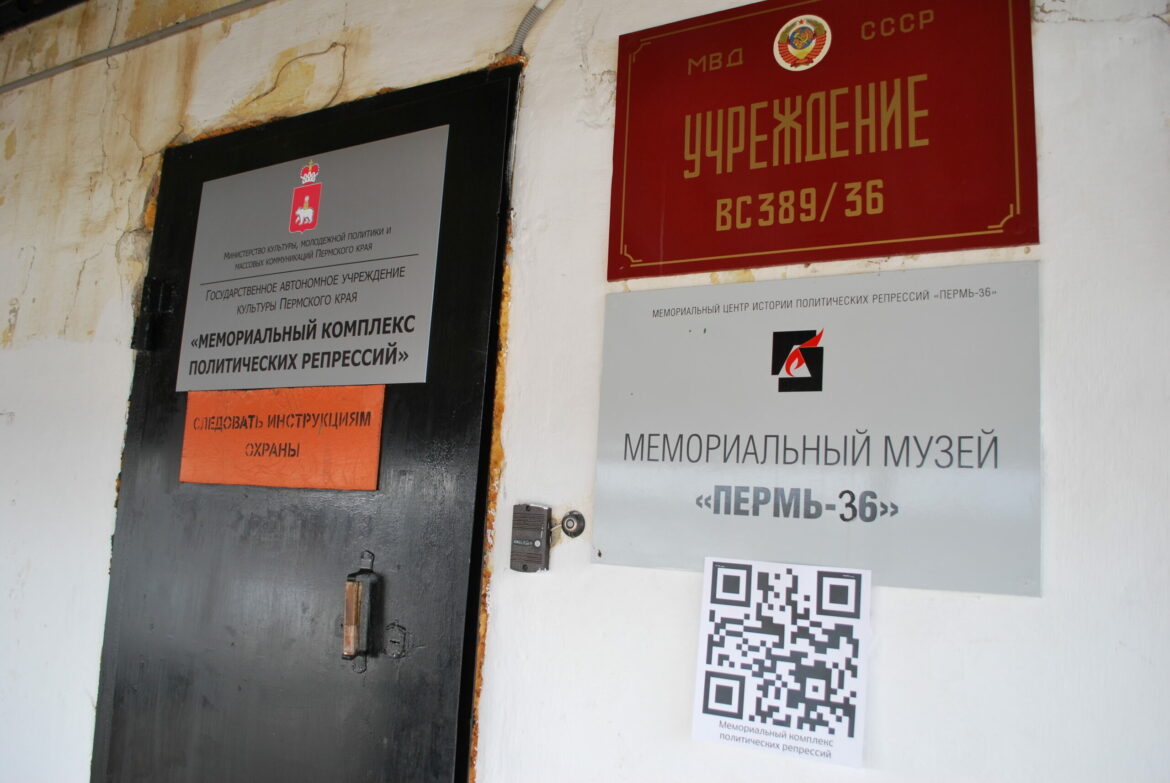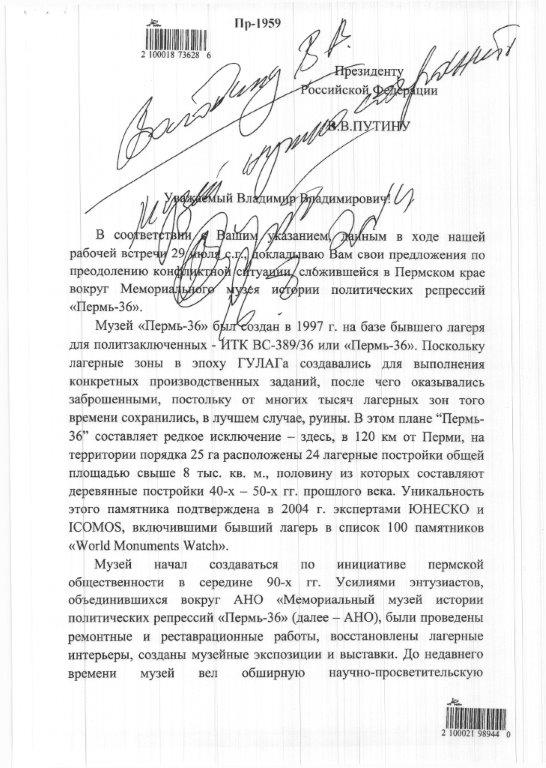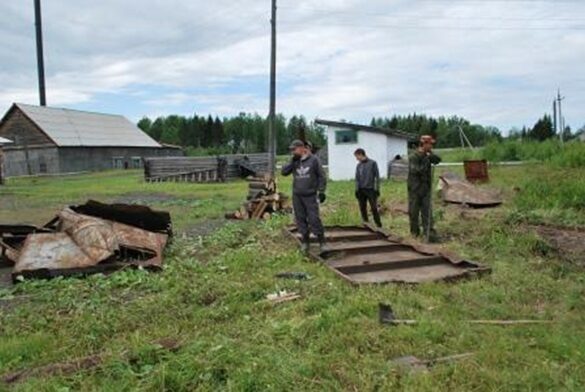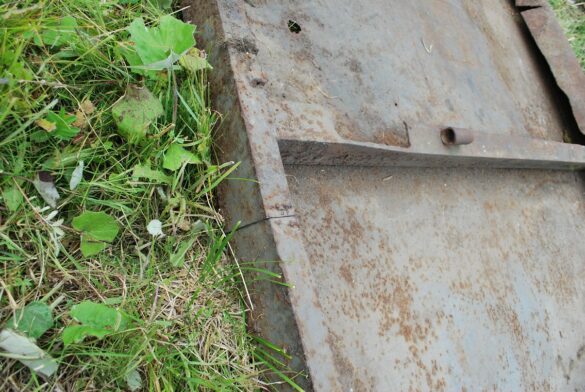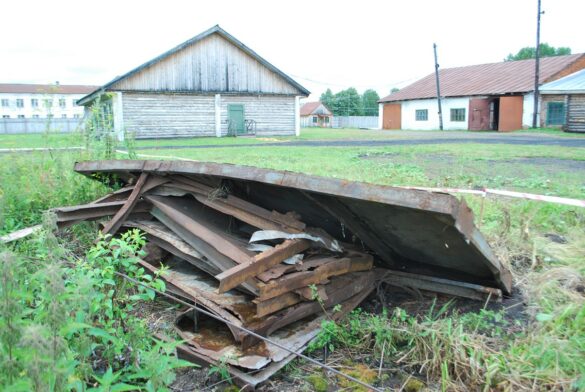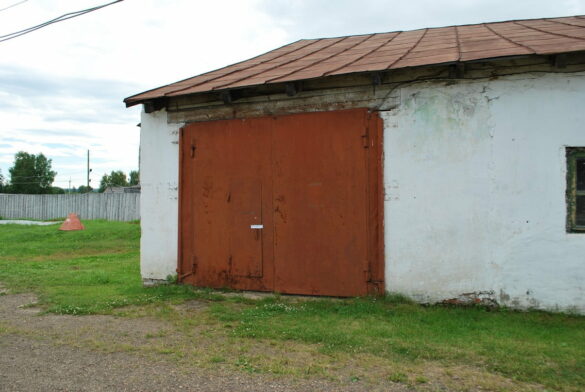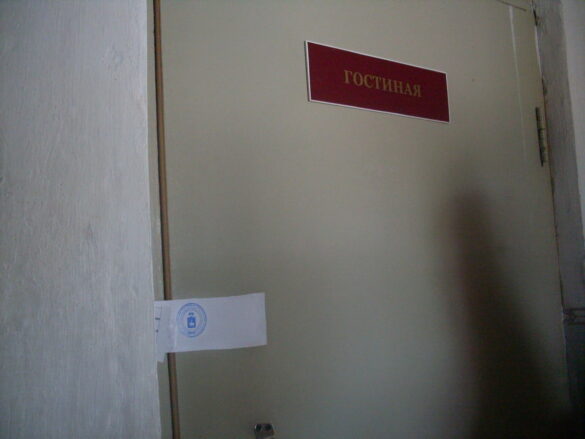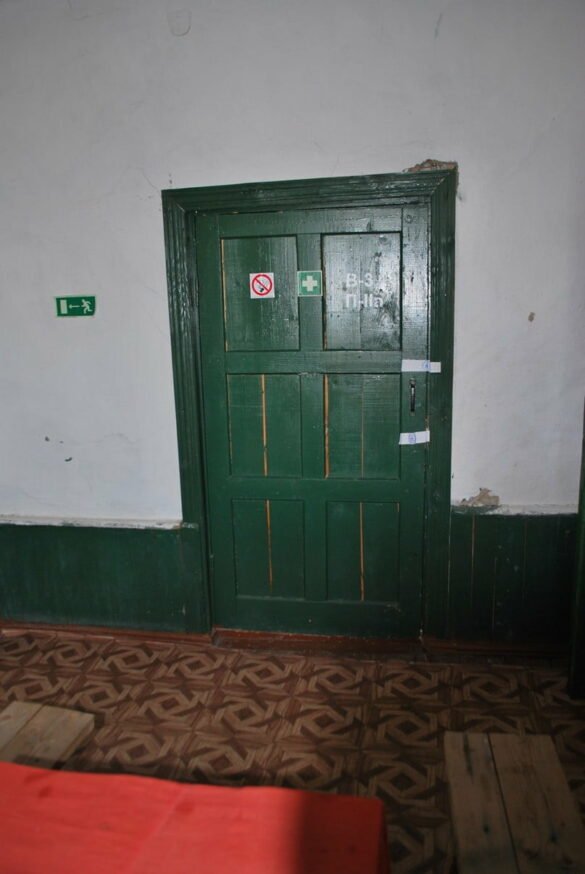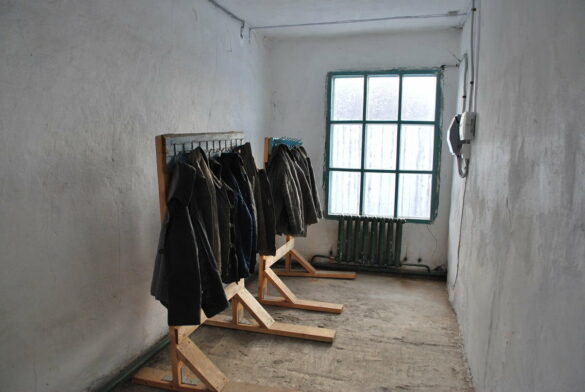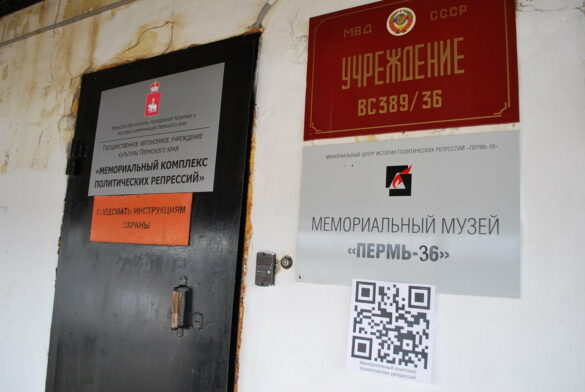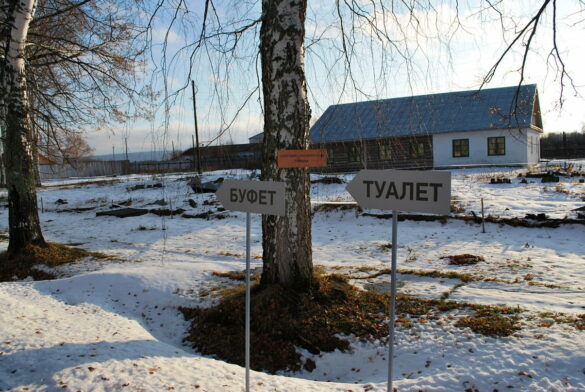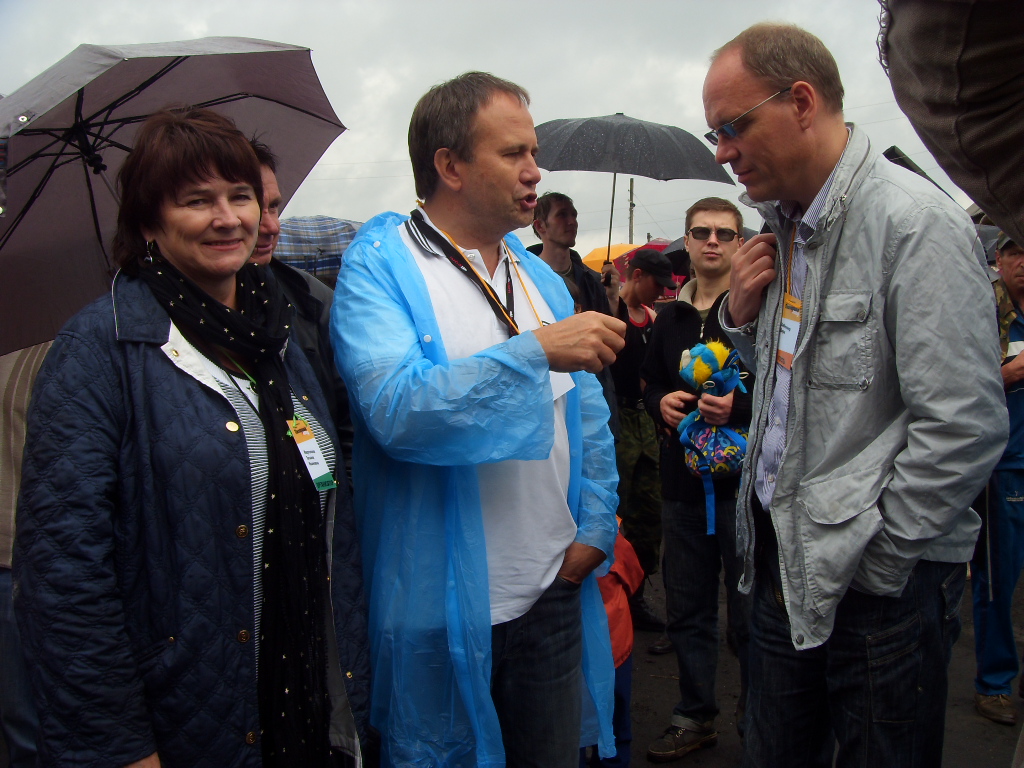The ‘Perm political camps’ exhibition was put into work in 2015. It was intended to reflect why and how Perm political camps were set up, their population and why the authorities repressed these people, the formal and actual routine, how the prisoners worked, and lived, and struggled for their rights. The material being plentiful and the topic extensive, it took two years to design the exhibition which was only constructed in 2017. The exhibition was prepared in two languages: in Russian and in English, and in two version: booth type and online type.
The exhibition was opened by Sergey Kovalyov, a dissident, one of the best-known prisoners of these camps, the first Chairman of the Russian Federation President’s Human Rights Committee in 1993 through 1996, the first Human Rights Ombudsman in the Russian Federation in 1994 through 1995, the director of the Human rights Institute and a member of the Board of Perm-36 Memorial Museum of History of Political Repression.
Opening of the exhibition and the action sphere around it resulted in a new project: the Perm Days of Memory of Political Repression Victims; in subsequent year 2018, it was transformed into the ‘Perm Days of Memory: Civil Seasons’ project which came to be held annually.
High-resolution design layouts of the booth-type exhibition versions in Russian and in English can be downloaded from this website, and used to print the exhibition on exhibitional banners in any large-format printing shop.
балабанова
EXHIBITIONS
The former staff of Perm-36 Memorial Center started designing new exhibitions in 2015, shortly after Perm-36 Memorial Museum of History of Political Repression they established and developed for twenty years was taken over and liquidated. The twelve booths of the ‘Perm political camps’ exhibition spotlight why Perm political camps were set up, their history, prisoners, routine, labor and everyday life therein, prisoners’ struggle for their rights.
Further on, new exhibitions were designed and set up annually. These dealt with the leading topic of each year’s ‘Perm Days of Memory’ Civil Seasons. The exhibitions provided a core of the Seasons’ programs, major events and actions.
Previously, the Memorial Center had a permanent mobile exhibition service; after the museum was liquidated, no funds or staff were available to exhibit new exhibitions at various platforms. Therefore, the staff and volunteers of the Memorial Center’s standing partner, Memorial’s Perm Branch display these in their programs and exhibitions over Perm Region.
Deprived after the raider seizure of Memorial Museum “Perm 36” of an opportunity to continue the work on preservation and museification of the former political camp “Perm 36”, on organization and conducting educational projects and mass events on the territory of the museum complex, the preserved core of the Memorial Center “Perm 36” focused on research activities and the “Civil Seasons “Perm Memory Days” project.
By continuing to develop and replenish the databases “Prisoners of the Perm Political Camps” and “Chronicles of the Main Events of the Perm Political Camps,” the Center’s staff has attracted new partners to this work. In particular, the archives of the Ukrainian Security Service provided access to the KGB archives and investigative files of some of the prisoners of the Perm political camps, which made it possible to significantly expand the content of the databases.
The scientific director of the center, Leonid Obukhov, completed a thirty-year study of the history of the “Perm 36” camp, when it had not yet become a camp for especially dangerous state criminals; as a result, he wrote the book “Perm 36. Prehistory.” Andrei Nikitin, a spokesperson for the Center, researched the raiding of the Memorial Museum of the History of Political Repressions “Perm 36” and prepared the book “Perm 36: A Chronicle of New Repressions”. Both books were presented to the Perm public at the “Perm Civic Seasons “Days of Memory”. Employees of the Center continued their work on the handbook “Perm Political Camps,” and finished compiling its first part – “Prisoners of Perm Political Camps.
In addition, the Center’s staff developed thematic and exposition plans for exhibitions exhibited at the Perm Civil Seasons, and all materials for these exhibitions were identified, collected, and studied.
The Museum of the Political Repressions History “Perm-36” after 2014
After Perm-36 Memorial Museum of History of Political Repression was taken over, and Perm-36 Memorial Center of History of Political Repression Autonomous Non-for-Profit Organization which founded this museum dissolved itself, its board, management and key staff went on working as an informal action group, Perm-36 Memorial Center. It mostly dealt with research, exhibitions, and projects.
The group studied history of political repression in USSR, history of GULAG and of Perm political camps. It designs and augments databases: ‘Prisoners of Perm political camps’, ‘Annals of Extreme Events in Perm Political Camps’. It ahs written and published books: ‘Perm-36. Prehistory’ and ‘Perm-36: The Annals of New Repression’, to continue the museum series: ‘The terror mapped: history of political repression’. The ‘Perm political camps’ handbook is in progress.
New exhibitions were constructed and displayed as part of the ‘Perm Days of Memory: Civil Seasons’ project in 2015 through 2020. To carry on the ‘Sawmill’ International Civil Forum’s traditions, civil art concerts and poetic meetings were held, new performances and documentaries shown, roundtables, debates, lectures< meetings and presentations of new books held.Perm-36 ANO liquidated. The anti-museum repression rehabilitated, and the new board legalized
In 2014, Sergey Kovalyov, a human rights activist, a former prisoner of Perm-36 camp, the first RF human rights ombudsman, a member of the Board of Perm-36 ANO, wrote his co-thinkers in the midst of repression against the museum:
‘What they want very much is a totally controllable, well-censored museum, under the same name, and, best of all, involving some of the same non-governmental people who are closely linked to it. Everything is clear here… Here is an unbiased, depoliticized museum thoroughly bowdlerized by specialists. It was, by the way, agreed with the museum’s public team which will continue cooperating with the caring (and resourceful) governmental control… I must admit this conversion is locked and loaded. Well, maybe, still missing a minute detail: public approval. They will try to force it out…’
All members of the Board of Perm-36 Memorial Center of History of Political Repression Autonomous Non-for-Profit Organization and many of its Council members at first shared Sergey Kovalyov’s above opinion but were forced over and over to agree to negotiate with the authorities so that the authorities could not declare: ‘we offered but they chose to refuse’. Each negotiation round was initiated by the authorities which always refused to implement the decisions made in the course of long and difficult negotiations.
The Board of Perm-36 ANO was aware it would be totally impossible to proceed with the goals set by the Memorial Center’s Bylaws which ‘are achieved via the former Perm-36 camp-based memorial museum complex’ so, in February 22nd, 2015 it decided to dissolve the organization.
This decision was only fulfilled on August 10th, 2016 because the Ministry of Culture of Perm Territory and the public institution which was established by it and took over the museum commenced quite a number of illegal proceedings against the Memorial Center which had to be combatted for about two years.
Here one camp’s and its museum’s history takes quite a new turn where a tragedy turns into a farce, fun fact, oddity, and anecdote.
Perm-36 Memorial Center of History of Political Repression currently exists as an independent informal association; as such, it remains a member of the European network of the International Coalition of Historic Sites of Conscience.
Full text of Kovalyov’s letter
Final attempts of cooperation, that is, simulation thereof began in January, 2015 after Mikhail Fedotov addressed the RF President, Vladimir Putin once again, and Vyacheslav Volodin held another, the third meeting concerning the museum. The meeting was attended by the deputy head of the Administration of the Governor of Perm Territory. When back in Perm, he offered a new pattern of Perm-36 Memorial Museum taking part in the museum’s further development, and then went to Nizhny Novgorod to negotiate it with the authorities of Volga Federal District.
In April, 2015, the authorities of Volga Federal District railroaded approval of the ‘Memorandum Of cooperation in Development of Perm-36 Memorial Museum of History of Political Repression. However, 12 days after the laboriously approved draft Memorandum was signed by the Memorial Center’s managers as decided by its Board, Perm-36 Memorial Center of History of Political Repression ANO was hurriedly listed by the RF Ministry of Justice as a foreign agent.
In August, 2015, Anatoly Makhovikov, the head of the Governor’s Administration held an urgent meeting involving Tatyana Margolina, the human rights ombudswoman for Perm Territory, and Tatyana Kursina, the Chief Executive Officer of Perm-36 ANO. The meeting resolved to return to the decisions of the Council for Development of Perm-36 Memorial Museum of History of Political Repression dd. October 31st, 2014. However, no further practical deeds resulted.
RF President’s Resolution, and establishment of an incompetent Museum Council
The subsequent events were initiated by Tatyana Margolina, the human rights ombudswoman for Perm Territory, Vladimir Lukin, the RF human rights ombudsman and the RF President’s Councilor, and Mikhail Fedotov, the Chairman of the RF President’s Council for Civil Society Development and Human Rights personally addressing Vladimir Putin, the RF President.
After these addresses, Vladimir Putin ordered Vyacheslav Volodin, the First Deputy Head of his Executive Office and offered Vladimir Lukin to deal with the issue. Vyacheslav Volodin held a meeting involving leading Russian human rights activists of the Administration of the Governor of Perm Territory then offered cooperation to Perm-36 Memorial Center’s management.
As a result, the museum’s development was decided to be returned to joint format involving the Memorial Center and the PI while changing the PI management. It was also decided to establish the Council for Development of Perm-36 Memorial Museum of History of Political Repression.
The Council comprised representatives of the Memorial Center and those of the authorities of Perm Territory on a par including a representative of Volga Federal District. Vladimir Lukin was elected Chairman of the Council as proposed by Vyacheslav Volodin.
Discussion of the Council’s draft charter documents failed to bring about a consensual decision at the Council’s first meeting in October, 2014 so acceptance of the documents was postponed.
After that, the Council never met again.
The Destruction of the Memorial Museum of the Political Repressions History “Perm-36”
In early 2012, Perm-36 Memorial Museum of History of Political Repression was at the peak of its development and was to make grade by becoming a federal-level, internationally well-known memorial museum complex in the years to come.
In the meantime, the RF Presidential Executive Office aimed to eradicate the few democratic institutions which had taken hold in the country, to muzzle the newly emerging civil society, to suppress significant civil initiatives. Perm-36 Memorial Museum of History of Political Repression became one of the first victims of this campaign.
Shortly after the elected Governor of Perm Territory was replaced in 2012 with a new, Kremlin-appointed one, the new regional authorities registered an autonomous cultural establishment, the ‘Memorial Complex of Political Repression’, and handed over the former Perm-36 camp’s buildings and structures to it in 2014. On the tip from the new authorities of the Ministry of Culture for Perm Territory, the ‘public’ staff took over the entire property of Perm-36 Memorial Museum of History of Political Repression Autonomous Non-for-Profit Organization which forfeited the museum, the collection, archives, library, exhibits and exhibitions on the museum’s premises. The public agency hired former camp officers as new advisers.
Actual liquidation of the museum of history of political repression cased a barrage of Russian and foreign press publications, with system-level human rights activists directly addressing Vladimir Putin, the RF President. As a result, the authorities initiated several rounds of negotiations with the Board of Perm-36 ANO but these turned out to be nothing other than mere soldiering.
In early 2012, Perm-36 Memorial Museum of History of Political Repression was at the peak of its development and was to make grade by becoming a federal-level, internationally well-known memorial museum complex in the years to come.
In the meantime, the RF Presidential Executive Office aimed to eradicate the few democratic institutions which had taken hold in the country, to muzzle the newly emerging civil society, to suppress significant civil initiatives. Perm-36 Memorial Museum of History of Political Repression became one of the first victims of this campaign.
Shortly after the elected Governor of Perm Territory was replaced in 2012 with a new, Kremlin-appointed one, the new regional authorities registered an autonomous cultural establishment, the ‘Memorial Complex of Political Repression’, and handed over the former Perm-36 camp’s buildings and structures to it in 2014. On the tip from the new authorities of the Ministry of Culture for Perm Territory, the ‘public’ staff took over the entire property of Perm-36 Memorial Museum of History of Political Repression Autonomous Non-for-Profit Organization which forfeited the museum, the collection, archives, library, exhibits and exhibitions on the museum’s premises. The public agency hired former camp officers as new advisers.
Actual liquidation of the museum of history of political repression cased a barrage of Russian and foreign press publications, with system-level human rights activists directly addressing Vladimir Putin, the RF President. As a result, the authorities initiated several rounds of negotiations with the Board of Perm-36 ANO but these turned out to be nothing other than mere soldiering.
Perm-36 Memorial Museum of History of Political Repression only came into its own due to a vast circle of assistants, partners, friend and mere sympathizers, and continuous, until 1992, support from the authorities of Perm Territory.
The first head of Perm Territory, Boris Kuznetsov supported establishment and functioning of Ural-GULAG, an independent research information center which studied the history of repression and political camps in Perm territory for two yearsт, prepared a conservation/restoration program for the former Perm-36 camp, and established the Memorial Museum of History of Political Repression there.
As the museum evolved, an unmatched public-private partnership came into being.
In 1994, when the first museum-building entity, Perm-36 Memorial Museum of History of Political Repression Limited Liability Company (LLC) was registered, the Administration of Perm Region, along with Perm Division of Memorial, became its founder, on personal order from the Governor, Gennady Igumnov.
In 2001, when the LLC was restructured into Perm-36 Memorial Museum of History of Political Repression Autonomous Non-for-Profit Organization (ANO), the Administration of Perm Territory once again became its cofounder on order from the Governor, Yuri Trutnev.
Oleg Chirkunov’s initiatives as the Governor aimed to get the museum go all-new and global.
Within the partnership, the Government of Perm Territory kept on owning the former cap’s entire immovable property thus being able to co-finance the restoration and current maintenance of the museum from the regional budget while the ANO raised extrabudgetary funds for research/collecting activities, creation of exhibits and exhibitions, design arrangement.
Establishment and development of the museum was greatly contributed to by its core group: the Museum’s Council and Board comprised A.I. Solzhenitsyn, V.P. Astafyev, A.I. Ginzburg, S.A. Kovalyov, L.M. Timofeyev, A.K. Simonov, A.B. Roginsky, A.Yu. Daniel, hundreds and hundreds of the museum’s friends helped it a lot by putting their talents, energy and souls into it.
